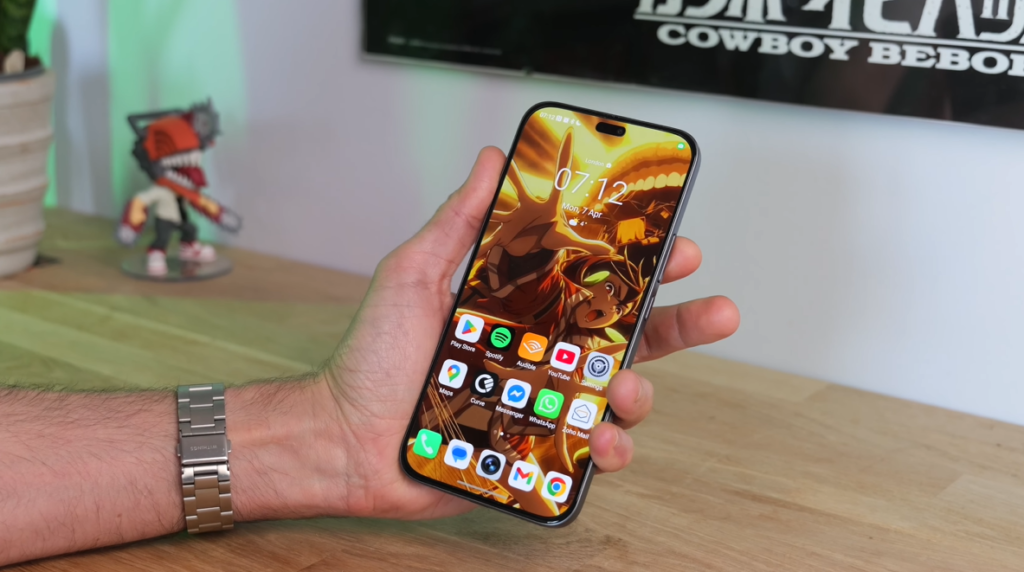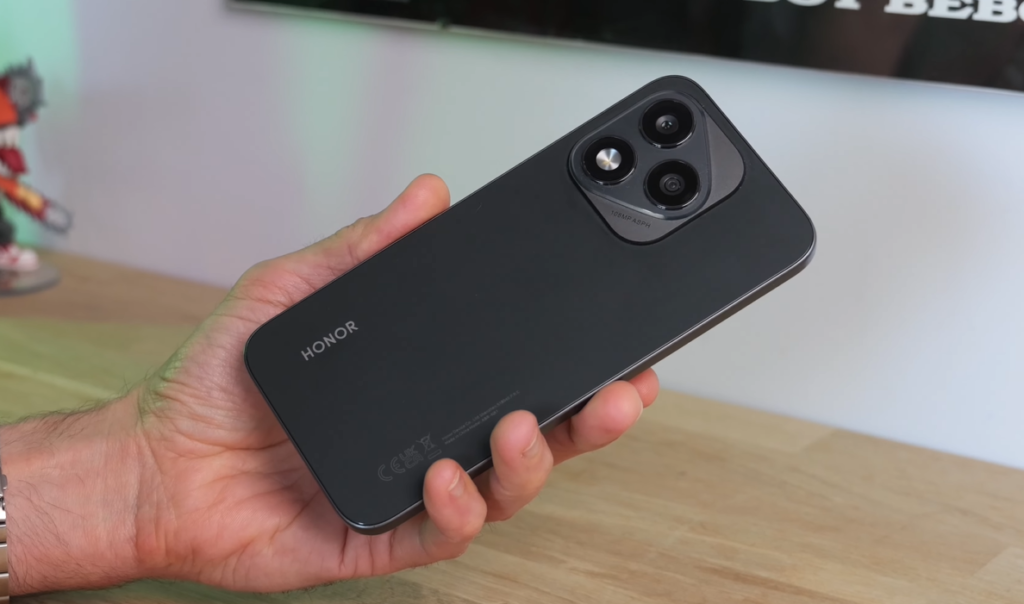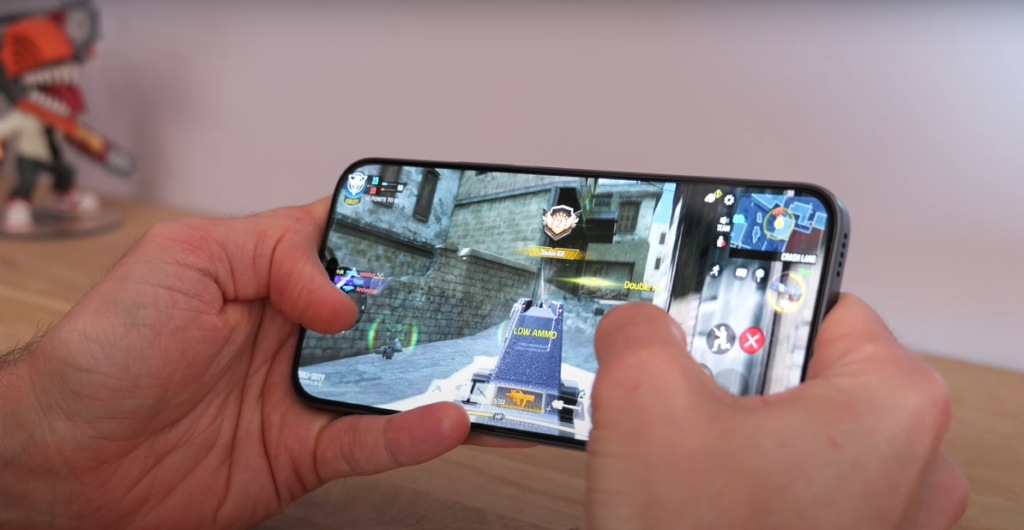Honor 400 Lite Review: £250 Android That Outshines the £1000 iPhone 16 Pro?
Hey, tech enthusiasts! It’s April 11, 2025, and today we’re diving deep into the Honor 400 Lite, a £250 Android that’s making waves by challenging the £1000 iPhone 16 Pro. Yes, you heard that right—a budget blower that dares to take on Apple’s premium brick and, in some ways, comes out on top. I’ve been living with the Honor 400 Lite as my daily driver for days—snapping pics, gaming, and testing its limits across London’s dreary streets and sunny parks.

Unboxing and First Impressions
The Honor 400 Lite lands in a sleek, no-nonsense box. Inside, you get the phone (I snagged the Velvet Black), a 35W charger, a USB-C cable, a basic TPU case, a SIM tool, and a quick guide. Straight out of the gate, it’s clear Honor’s aiming for iPhone vibes—flat edges, skinny bezels, and a chunky square camera bump. At 171 grams and 7.29mm thin, it’s a slender stunner for £250. The pre-installed screen protector is a nice touch—budget phones often skimp here. First impression? It doesn’t scream “cheap”—it’s got swagger that belies its price.
Design: iPhone Vibes on a Budget
Look and Feel
Honor’s design team peeked at Apple’s playbook. The flat 6.7-inch AMOLED display sports razor-thin bezels, a pill-shaped selfie cam cutout (a bit chunky, mind), and those trendy flat edges. I’m not wild about flat sides—too sharp for long holds—but the rounded corners and slim profile make it comfy enough. The plastic frame with a metallic matte finish keeps it fingerprint-free and looks slick, though it’s no glass-and-metal iPhone. Flip it over, and the square camera module echoes the iPhone 16 Pro—big, bold, and less wobbly than expected. It’s not as “wide-bobby” as Apple’s, and I’d argue it’s got more flair.


Build Quality
At £250, don’t expect flagship toughness, but the Honor 400 Lite holds its own. After days of pocket-tossing and accidental table knocks, no scratches yet—Touchwood! It’s IP64 splash- and dust-resistant, surviving a rainy London drizzle with ease. Unlike the iPhone’s IP68, it’s not dunk-proof, but for the price, it’s rare to get any water resistance. The matte rear picks up light grime—nothing a quick buff can’t fix. Colors? Velvet Black, Velvet Grey, and Marrs Green (a nod to 80s banger “Pump Up the Volume”? Doubtful, but fun).
Why It Matters: For £250, it’s a stylish, durable daily driver—iPhone-esque without the pretension.
Display: AMOLED Brilliance on a Dime
The 6.7-inch FHD+ AMOLED (2412×1080) is a standout. With a 120Hz refresh rate and 3500 nits peak brightness (claimed), it’s silky-smooth and vivid. Streaming Dune: Part Two on Netflix, I got punchy colors, deep blacks, and crisp whites—no HDR, but still eye-popping. The chunky selfie cam notch intrudes in full-screen mode (like the iPhone’s notch), but it’s a minor gripe. Outdoors, it’s bright enough—readable in London’s rare sun without shades, though squinting was needed with sunglasses on.

Eye comfort? 3840Hz PWM dimming kills flicker, perfect for late-night scrolling. Compared to the iPhone 16 Pro’s OLED, it’s less bright (Apple hits 2000+ nits real-world), but for £250, this AMOLED trounces the iPhone’s £1000 price tag. Audio’s a letdown—mono speaker, loud but lopsided and muddy. Stick to Bluetooth buds—streaming was near-flawless, with only two split-second dropouts in days.
Why It Matters: A flagship-grade screen at budget cost—beats the iPhone’s display value hands down.
Performance: Budget Power, Not Ultra
Under the hood, the MediaTek Dimensity 7025 Ultra (8GB RAM, 256GB storage) drives the show. It’s akin to the Snapdragon 695—solid, not spectacular. Daily use? Snappy enough—apps like WhatsApp and Chrome hum along, though waking from sleep lags a second. Gaming? COD Mobile and PUBG hit 60 FPS on high settings, smooth as butter. Genshin Impact? Playable, but expect frame drops in chaos—stick to lighter titles.

Compared to the iPhone 16 Pro’s A18 Bionic, it’s no contest—Apple’s a beast. But for £250 vs £1000, the Honor’s performance is respectable. MagicOS 9 on Android 15 is slick—customizable icons, split-screen multitasking (take that, iPhone!), and a gaming mode that blocks notifications. AI features? Magic Capsule mimics Apple’s Dynamic Island for media controls—neat, if gimmicky. Smart Camera uses Google Lens (not Apple’s half-baked Visual Intelligence) to ID objects flawlessly—plants, pets, you name it. The iPhone stumbles here, hesitating on basics.
Storage Bonus: 256GB standard—double the iPhone 16 Pro’s base 128 GB. Another £100 to match it? Ouch, Apple.
Why It Matters: Good-enough power and smarter AI—£750 saved for Greggs meal deals!
Camera: Button Beats Apple
Hardware and Features
The 108MP main + 5MP ultrawide dual setup is simple but punchy. The real star? A dedicated camera button—tap to launch, squeeze to focus, slide to zoom. It’s more intuitive than the iPhone 16 Pro’s, which felt clunky in my hands. Customizable too—swap video for burst mode or tweak sensitivity. At £250, this is a photographer’s dream.
Photos? Bright, bold, Samsung-esque—less natural than the iPhone, but skies stay blue, not washed out. 3x lossless zoom (digital crop) holds detail; 5x gets fuzzy. The ultrawide is soft—skip it. HDR struggles in high-contrast scenes, but burst mode saves the day. No 4K video—1080p/30fps only—but it’s clean for casual clips. The 16MP selfie cam with LED flash shines in dim clubs or closets—vlog-ready, though stabilization wobbles if you’re shaky.
iPhone Comparison
The iPhone 16 Pro’s triple-lens system (48MP main, ultrawide, telephoto) and 4K video outclass it—£1000 buys that. But the Honor’s button and AI smarts (e.g., Google-backed object ID) feel more practical than Apple’s finicky setup. For £250, it’s a win.
Why It Matters: Usable, fun camera tech—beats the iPhone’s value, if not its raw power.
Battery Life: Solid, Not Stellar
The 5230mAh battery with 35W charging lasts a day, 20-30% left after heavy use (no gaming). Add an hour of COD and video chats, and it’s toast by bedtime. It matches the iPhone 16 Pro’s 20W charging speed (50% in 30 mins)—no wireless, but £250 can’t have it all. The Dimensity chip sips power, but it’s not a two-day champ.
Why It Matters: Decent stamina—£750 cheaper than Apple’s similar runtime.
Software and Updates
MagicOS 9 is fluid and feature-rich—split-screen, gaming tools, and AI perks. The always-on display isn’t always on (prod it awake)—a rare iPhone win. Updates? Honor’s coy—expect 2-3 years of OS upgrades, quarterly patches, not Apple’s 6-7 years. For £250, that’s fair.
Why It Matters: Customizable, smart software—short support, but price justifies it.
Honor 400 Lite vs. iPhone 16 Pro
| Feature | Honor 400 Lite (£250) | iPhone 16 Pro (£1000) |
|---|---|---|
| Display | 6.7″ 120Hz AMOLED, 3500 nits | 6.1″ 120Hz OLED, 2000+ nits |
| Processor | Dimensity 7025 Ultra | A18 Bionic |
| Storage | 256GB base | 128GB base (+£100 for 256GB) |
| Camera | 108MP + 5MP, camera button | 48MP triple, camera button |
| Battery | 5230mAh, 35W | ~3300mAh, 20W |
| Software | Android 15, 2-3 yrs | iOS 18, 6-7 yrs |
Vs. iPhone: Honor wins on value—bigger screen, more storage, smarter AI. iPhone takes performance and camera depth.
Verdict: £250 Android Triumph?
The Honor 400 Lite is a budget marvel—£250 buys a poppy AMOLED, slick design, a killer camera button, and AI that humbles the iPhone 16 Pro’s. Mono audio and middling power hold it back, but for £750 less, it’s a steal. Available in Velvet Black, Grey, and Mars Green—grab it if value trumps flagship flexing. Thoughts? Drop ’em below!
Author Section
Tech Spurt
Hey, tech lovers! I’m Chris Barraclough, the voice of Tech Spurt, dishing out detailed reviews on phones, laptops, and gadgets. With 15+ years in tech journalism—TechRadar, Mobile Choice—I test every device hands-on for real-world truth. Subscribe for more—let’s geek out!
- TikTok: tiktok.com/@techspurtvideo
- Bluesky: bsky.app/profile/techspurtvideo.bsky.social
- Amazon: amazon.co.uk/Chris-Barraclough/e/B005UGALE4
£250—available in Velvet Black, Grey, and Mars Green.
108MP + 5MP with a better camera button; iPhone wins on versatility and 4K video.
Yes—COD and PUBG run at 60 FPS; heavier titles like Genshin lag.

